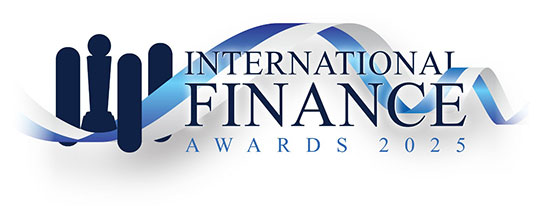The payment space has gone through many changes, from traditional cash and money orders to modern methods like credit and debit cards, Automated Clearing House, and Digital Payments. These changes have kept up with advancements in technology, security, and consumer needs. The latest addition to this evolution is Pay By Bank.
Pay By Bank, as defined by Delia Pedersoli, COO, MultiPay Global Solutions, has been built to deliver business benefits to retailers and an enhanced customer experience (CX). As an alternative payment method (APM) that requires no additional downloads for a customer, Pay by Bank works under the following principle: when in-store and at checkout, a customer selects Pay By Bank as a payment option. They then scan a uniquely generated QR code on the checkout terminal, opening the customer’s banking app. From there, with one click, customers can authorise the payment. A bank-to-bank transfer then sends funds instantly to the retailer’s account.
Is Pay By Bank becoming popular?
Data from the British Retail Consortium (BRC) found that APMs already account for 5% of all transactions in the United Kingdom. Research from EY too discovered that 85% of the American merchants were expecting to accept new APMs in the next three years.
“As demand for APMs rises across the world, Pay By Bank is well on course to be at the forefront of the queue to replace card payments,” Pedersoli noted further.
With digital wallets now serving as the leading method of payment for North American e-commerce purchases, the EY survey has predicted APMs to be at the forefront of the US payment roadmap. So as a new concept, Pay by Bank has a bright future. In fact, it is emerging as a favourite alternative payment method, offering both security and convenience.
Pay by Bank allows customers to make online payments directly from their bank accounts, eliminating the need for cards. This method not only offers merchants the opportunity to enjoy lower fees but also significantly reduces the risk of chargebacks and fraud.
Talking about Pay by Bank’s popularity in Europe, let’s talk about the Tink-Payop experiment in the continent.
Stockholm-based Tink, a market-leading payments services and data enrichment platform in Europe, has announced its Pay by Bank partnership for checkout options with Payop, the international payments processor and aggregator. Payop has a specialisation in working with merchants ranging from small e-commerce stores to large enterprises, offering tailor-made checkout options with numerous payment solutions.
Payop has already integrated Tink’s Pay by Bank solution for merchant checkouts. Payop saw a more than 2.5-fold increase in payments between January and December 2023 after partnering with Tink.
Tink is quickly becoming a key player in the Pay by Bank domain, with Berlin-based payment processor Micropayment now partnering with the payment services and data enrichment platform. Micropayment will be introducing Tink’s Pay by Bank product for merchant checkouts across the DACH (Germany, Austria and Switzerland) region.
Explaining A-Z of Pay by Bank
Pay by Bank’s working principle is pretty simple: during checkout, customers select the Pay by Bank option. Then they get redirected to their bank’s trusted online platform or open their banking app and approve the payment. Following this, the funds move directly to the merchant’s account. Merchants can provide the Pay by Bank option through their online/mobile checkout or in person with a Pay by Bank terminal.
Some of the benefits of this method are: reduced costs as direct debit payment mechanisms like Pay by Bank typically come with lower transaction fees. In the United Kingdom, businesses often pay between 1.5 and 3.5% per transaction in card processing fees. On the other hand, Pay by Bank offers competitive rates, enhancing profitability.
Another advantage is in the form of chargebacks. Credit cards come with a higher risk of chargebacks. Customers initiate a chargeback on a purchase made with a credit card, which results in merchants shipping goods/providing services without receiving payment. With Pay by Bank, merchants get more say in providing a refund. Also with security elements like multiple layers of security, including passcodes, biometrics, bank passwords, and two-factor authentication, Pay by Bank makes it challenging for unauthorised users to make payments.
Another advantage is swift transactions. Real-time payments (RTP) networks, such as Faster Payments in the United Kingdom or PayNow in Singapore, ensure almost instantaneous transfers. Completing Pay by Bank transactions through their bank’s interface also boosts customers’ trust and confidence, especially for cross-border transactions.
Also, while Pay by Bank can be executed for any good or service, they’re most often applied to bills, subscriptions, and loan repayments. Also, the method should not be confused with account-to-account (A2A) payments (payments to oneself to fund an account or peer-to-peer payments via apps like Venmo).
“Cost reduction is the main benefit of ‘Pay by Bank’. In the US, merchants must pay around 3% in fees for every credit card transaction. When considered at scale, this number is massive. Some large enterprises pay billions of dollars in credit card fees per year,” comments Plaid.
Beneficial for customers
In the words of Delia Pedersoli, COO, MultiPay Global Solutions, “In recent years we have witnessed the rise of ‘zero consumers’ who have no brand loyalty and no patience for bad service. This lack of patience for bad service makes Pay By Bank a powerful tool in retailers’ arsenals. Offering a quick and easy checkout process that bypasses the need to enter card details or navigate cumbersome checkout procedures provides a hassle-free way for consumers to pay, significantly boosting the overall customer experience.”
“Offering a new and easy way to pay is not the only way Pay By Bank boosts CX. Connecting seamlessly with existing loyalty programmes means data and insights generated by Pay By Bank payment systems can easily be used and combined with online payment data for a full 360-degree view of the customer. With a more detailed view of each customer merchants can provide tailored offerings and promotions that enhance customer relationships and prevent customers from becoming zero consumers,” she continued further.
In 2022, Plaid, a prominent fintech company, conducted a survey and identified the potential for Pay by Bank to significantly influence daily transactions and recurring payments. This payment solution offers greater convenience by allowing users to easily log into their bank accounts and make payments, eliminating the need to enter credit card details.
Another benefit was in the form of “Risk Reduction” as Pay by Bank comes with the ability to mitigate risks associated with credit card usage. For instance, customers don’t have to worry about missing payments due to an expired card/about acquiring excess debt. Moreover, direct bank payments reduce the chance of missed subscriptions/bills compared to cards.
Plaid also found youth to be the main predictor of Pay by Bank adoption. Other factors, such as income, gender, and tech savviness, have no impact on Pay by Bank adoption when adjusted for age.
Huddles remain
Pay By Bank’s biggest plus has been its operational improvements. It is providing significant cost savings to merchants by eliminating interchange and scheme fees. These savings can be used to drive growth and improve operations.
Pay By Bank is also seeing funds being instantly transferred from the customer to the merchant’s account. Having funds arrive instantly is in turn, providing accurate and real-time visibility into revenue and quick access to reserves. Furthermore, as funds flow seamlessly between accounts, there is a minimised exposure to fraud, further reducing losses.
However, the mechanism has huddles of its own as well. One of them is the historical association of ‘Pay by Bank’ with poor user experience (UX). Customers have to enter their account and routing numbers, long number sequences that are often not readily at hand.
Nevertheless, things are changing here, as instant authentication tools are reducing the UX friction associated with linking bank accounts. Plaid itself, for example, is offering a simple and frictionless UX, through its embedded search flow. This flow creates a more seamless transition to the account connectivity experience required for ‘Pay by Bank’.
Most Pay by Bank transactions happen via the Automated Clearing House (ACH) and are revocable, which creates a potential risk situation, as fraudsters see the opportunity of making a purchase using information from an account owned by someone else. The account owner may then claim that the transaction was unauthorised.
“A customer-initiated return such as this (the scenario above) can take up to 60 days to process. In the meantime, physical goods may have already been shipped and received. There is also the risk of bank-initiated returns, in which a financial institution cancels a transaction due to issues such as account closures or insufficient funds,” Plaid commented further.
Bank payments use ACH, which has a slower settlement time than credit cards. This can range from hours to days, depending on the form of ACH used and the time of day submitted. Other payment rails, including Real Time Payments (RTP) and FedNow, offer instant settlements but have limited coverage and capabilities for requesting payments. In their current forms, these payment rails work well for instant payouts but still have a ways to go for requesting instant payments from customers in real-time.
To address the above issue, Plaid has introduced “Plaid Signal,” which creates synthetic instant ACH. In this method, Signal determines if a transaction is low risk. If it is, the merchant can proceed with the transaction as if it were a payment that was settled immediately. If it’s not, they can choose to re-verify the customer, wait to provide the goods or service to the consumer until the payment settles, or steer them to another payment option.
As per Delia Pedersoli, COO, MultiPay Global Solutions, Pay By Bank is already in use with millions of consumers on a daily basis. Over in Sweden, the Swish payment platform, an early version of a Pay By Bank type system, has eight million users, with the average user making over 10 transactions in May 2023 alone.
“Ultimately, payments are constantly evolving. Retailers must be ready to adapt and offer the latest payment method to maintain a positive relationship with the new breed of zero consumers. The good news with Pay By Bank is that it is available now, is quick and easy to install, and provides power features that can transform today’s retailers. While card payments may rule the roost now, no merchant can afford to miss out on the next payment king,” she concluded.

